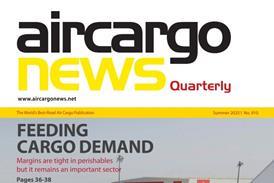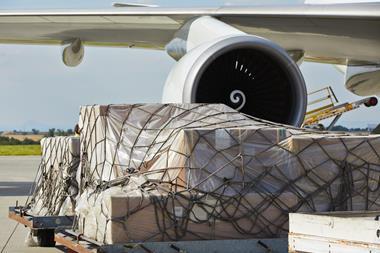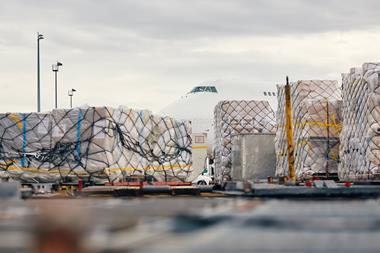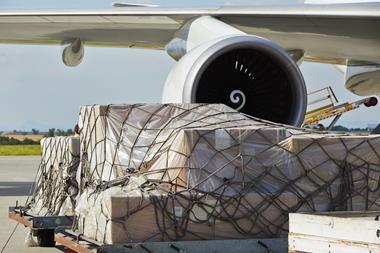
Airlines are missing out on a golden opportunity to profit from the fastest growing segment of the air cargo market, although they are ideally positioned to take advantage of it, according to Denis Ilin, co-founder and chief executive of e-Smart Logistics.
With industrial demand stuck in low gear, e-commerce has been the chief engine of airfreight traffic growth over the past year, filling a growing armada of dedicated freighters out of China as well a bellyholds of passenger planes.
“E-commerce is taking a larger portion of the general cargo market,” says Ilin.
From a marginal share at the outset its has gone to about 20% of global air cargo volumes today, and some predictions point to 25% by 2027 and a subsequent ascent to 30% and above, he notes.
This has brought up a new clientele outside the traditional airline-forwarder axis.
E-tailers are looking for lift to their markets, and they want to deal directly with carriers instead of going through middlemen, notes Stan Wraight, president and chief executive of SASI World.
This development augurs a paradigm shift. Today airlines receive e-commerce in consolidations, with commensurate low margins, but the service that e-tailers desire would generate much juicier rates closer to integrator pricing.
“You have to develop a product. That’s what gives you the margin,” says Ilin. “Your margin goes up 30-40% per parcel, but it doesn’t ultimately increase the price for the e-tailer.”
Falling short
However, the airline industry is not geared up for this today, falling short on several fronts.
To begin with, e-tailers are looking for end-to-end solutions, not only the airport-to-airport section, and they think in terms of parcels and time-definite door-to-door transit times – like their customers.
Airlines have to shift their thinking from kilos and time-definite service only within their own flight schedules, Ilin stresses.
“E-tailers are interested in the quality of the entire solutions, not just to a destination airport. An airline can be super-efficient and punctual to fly the goods, but if they get stuck in a warehouse with a ground handler or at a parcel processing centre, it is a failure,” he says.
“A logistics supplier should be thinking about the quality of its product with the mindset of the final consumer to whose door you are delivering,” he says.
The prototype of the provider that e-tailers are looking for would be Cainiao, the dedicated logistics offshoot of Alibaba, but its affiliation to the e-commerce behemoth rules it out for other e-tailers.
So far there is still a lot of scepticism on the airline side about taking the leap and filling that gap.
More than once airline people have told him that they don’t know how to deal with the ground elements or that they don’t know how to sell such a service, Ilin says.
This is where e-Smart Logistics comes in with its integrated end-to-end logistics solution.
He describes it as a bundled service that facilitates all the requisite activities on the ground, from shipment preparation and document generation to first and final mile, and leverages a platform to provide end-to-end visibility and data flow between all involved parties, including customs.
Some of these solutions are already used by Amazon today, which adopted them in response to Brexit, notes Wraight.
Ilin is in a perfect position to align air cargo processes with parcel logistics requirements.

Source: Shutterstock
After his tenure as president and chief executive of AirBridgeCargo Airlines and a spell as chairman of Sochi International Airport, he served as deputy director general of the Russian Postal Service, where he oversaw international and cross-border business.
For the platform, Ilin turned to Kale Logistics Solutions. Beyond end-to-end visibility and data flow, the software provider’s AvSys platform also covers harmonisation for customs processing, manages different layers of packaging and produces routing labels.
Ilin emphasises the importance of the customs element, as customs authorities are moving to requiring visibility of every parcel, so a clearance process would not delay entire containers, and they are looking for a more comprehensive data set on incoming parcels.
“Our system can talk to customs authorities of 120 countries,” he adds.
Local partners
For the first and last miles of a parcel’s journey e-Smart Logistics uses an array of local providers.
“The selection process is quite standard: a tender and the best value-for-money proposition. More important are criteria which are primarily defined by the time delivery requirements from our e-customer in the first place,” says Ilin.
Some four decades after the integrators snatched the premium parcel business from the airlines, the evolution and requirements of e-commerce allow the latter to turn the tables.
Integrators cannot match airlines for speed or cost in this game, Ilin argues.
“What is the fastest possible delivery between London and New York? A direct passenger flight,” he says, noting that their hub-and-spoke model puts integrators in a slower lane.
Large passenger carriers with extensive route networks are well positioned to make a splash in the e-commerce transport, he adds.
Moreover, many have empty capacity in their domestic networks, and e-commerce would be an excellent avenue to fill these with incremental revenues, he points out.
Not only are scheduled airlines faster than the integrators, but they also have an edge on the cost side with their proprietary networks and infrastructure.
“You suck wind on the return leg back from a hub. You have to sell both directions,” remarks Wraight.
The e- Smart Logistics offering should appeal both to airlines and e-tailers.
“In theory I can do both. I can offer it to an e-shipper and turn to an airline for the air transport element, but I think we probably need to prioritise airlines,” reflects Ilin, seeing a likely bigger niche on the airline side.
Essentially, a tie-up with his outfit will turn a carrier into a virtual integrator, he adds.
Expansion ambitions
At this point e-Smart Logistics has established partnerships in Europe, the Americas and India. More will be added into the fold, both for expansion of geographical coverage and functionality.
“Eventually e-Smart Logistics will provide the global coverage through a global partnership network, with some regions represented on an exclusive basis, and some having a few local partners. Currently we are talking to a few candidates in China, which most likely will be on a non-exclusive basis,” says Ilin.
Besides aligning its own set-up, an airline partner will have to bring its handling agents into the mix for seamless data flow, visibility and processes, which will take some time to work out.
Down the road, with processes well established, some carriers may think about extending their reach to destinations served through interline arrangements.
“An interline airline partner would in effect become another vendor for my airline client in the logistics value chain,” he says.
“That means the vendor has to be integrated into the IT platform to be able to transmit the required set of data. As an interline partner, its system should be already talking to the IT system of my main airline, which (theoretically) should make the IT-integration much easier.
“However, as always, it depends on specific routes, IT systems, etc. Besides, e-Smart Logistics will have to set up its own ground station at the location of the interline partner, as in any other locations of the main airline to facilitate the airline’s e-com product at the airport and beyond,” says Ilin.
He sees promising potential for the concept beyond the e-commerce market.
“The virtual integrator product can be used for any time-sensitive shipments which require per-item visibility throughout the entire journey,” he notes. “A product for these market segments will be following e-commerce rather soon.”













